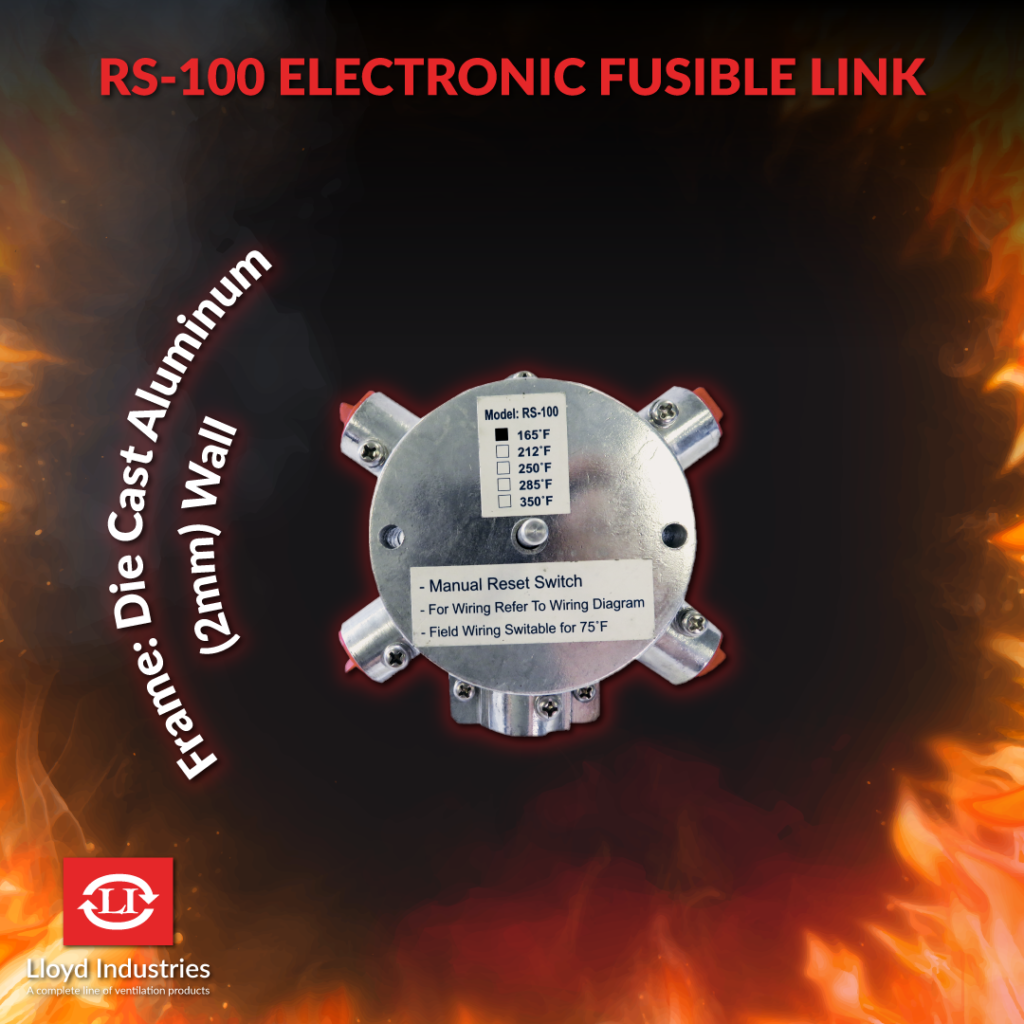
Fire safety is a critical consideration in building design and construction. Fire dampers are essential components of HVAC systems that help prevent the spread of smoke and fire within a building. One important element of fire dampers is the fuse link. In this blog post, we will answer the question, “What is a fuse link?” and provide insights into their role and usage in fire damper systems.
Fuse links play a vital role in fire damper systems by ensuring that the damper blades remain open under normal operating conditions, allowing for the free flow of air. They are designed to activate at specific temperatures, commonly set at 165°F or 212°F (75°C or 100°C). Once the ambient temperature reaches or exceeds the predetermined temperature, the fuse link activates, causing the damper blades to close and restrict the passage of smoke and fire.
At Lloyd Industries, we offer various types of fuse links, specifically designed to suit different products and applications. These fuse links are carefully calibrated to activate at precise temperatures, ensuring reliable and accurate performance.
It is important to note that fire dampers and their associated fuse links should not be stored in conditions exposed to excessive heat. Such exposure can cause premature activation of the fuse link, compromising the functionality of the fire damper. Therefore, it is crucial to store fire dampers in appropriate environments to maintain their performance and reliability.
Fuse links are critical components of fire damper systems that ensure the proper operation and functionality of fire dampers in the event of a fire. These heat-activated metal devices hold the damper blades in the open position and activate at specific temperatures, facilitating the containment of smoke and fire.
At Lloyd Industries, we provide a comprehensive range of fuse links tailored to different products and applications. Please refer to our full link line to access detailed information.
One crucial aspect to note is that fuse links should always be installed and replaced according to manufacturer guidelines and industry standards. It is essential to follow the specific temperature ratings and activation requirements specified by the fuse link manufacturer to ensure optimal performance and compliance with fire safety regulations. Regular inspections and maintenance of fire dampers and their fuse links are also recommended to ensure their continued functionality and effectiveness in case of a fire emergency.
Remember, proper storage and handling of fire dampers, including their fuse links, is essential to ensure optimal performance. If you have any questions or need assistance with selecting the right fuse links for your fire damper systems, our knowledgeable team is here to help. Contact us at to discuss your requirements.
Maintaining fire safety in buildings requires a thorough understanding of fire protection systems and their components. By investing in reliable fire damper solutions and adhering to proper installation and maintenance practices, we can enhance the safety of occupants and protect valuable assets.




